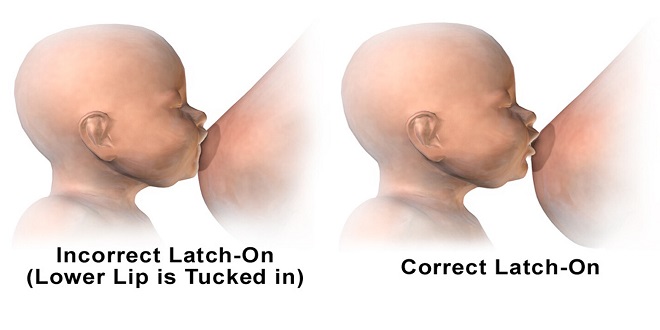Correcting a Latch – The Most Complete Tutorial

When it comes to breastfeeding, you’ve likely heard the term “latch”. A latching infant refers to a baby who is able to connect with the nipple or areola while breastfeeding. Bad latches are those in which the baby can’t secure the nipple or areola in their mouth well enough to allow them to start suckling.
There are many ways to fix a bad latch in your baby’s life. You could simply switch sides. You can also try other methods that will make it easier for you both. We will give you detailed information about how to get your baby to latch on while breastfeeding, so it can be a fun experience for you both.
Why is a Good Lat so Important?
For a few reasons, a good latch is essential. A good latch will ensure that your baby gets enough milk. By using a strong swallow, a good latch will enable your baby to get the most milk from the breast. Poor latches can cause babies to miss a lot because they aren’t able extract the milk correctly.
Good latches can help prevent nipple discomfort, which is common among breastfeeding moms. There are many factors that can cause nipple pain, including an incorrect latch or a baby not receiving enough milk. Poor latching can lead to more pain. Bad latching can lead to a condition called a breastfeedinggranuloma, where the nipple begins to close.
How to Find a Good Latch
First, ensure that your baby is breastfeeding on the same breast as you should be. You can change sides if you don’t. Make sure your baby’s mouth is open. You can encourage her to open her mouth by placing your nipple next to her gums, and then let her drink the milk. To check if the breast tissue is present, place your finger in her corner. You need to adjust the latch if you cannot feel the breast tissue. You need to correct latch breastfeeding if your baby doesn’t get enough breast tissue.
How to Fix a Bad Latch
There are many things you can do to help your baby get a proper latch after you have checked for it.
Repositioning your baby’s nipple in her mouth is the first thing you should do. The baby will not be able latch onto the latch if the nipple doesn’t fit in her mouth correctly. You can check if the baby is not sucking the nipple into her mouth by looking at the latch. You will need to reposition your nipple if they are.
Switching sides is also possible. You can also try switching sides. Babies may not like the breasts they prefer more. However, if the baby latches better to the opposite side of the breast, it might help. To get milk flowing, you can massage your breasts. You can help your baby get a good latch by sucking on the nipple better.
3 Steps to Correct and Check for a Latching Problem
You should address any latching issues in your baby’s life. These are the steps to take in order to fix your baby’s latching problem. You must ensure that the baby is correctly positioned. Your nipple should be in the baby’s mouth. Your baby should have her nipple at the back of her mouth with her lower lip above it. You can adjust the position of your nipple or gently guide the baby’s lips to the correct place.
To ensure a good latch, make sure your baby’s nipple is not too far into her mouth. Good latches are those where the baby’s upper lips cover the areola and the nipple is in the baby’s lower back.
Conclusion
One of the most precious sights is a baby that latches properly. If you can’t get a good latch it can be stressful for you and your baby. But, it doesn’t have be this way. You can teach your baby how to latch correctly in no time with the right techniques. Good latches are essential for your baby to receive enough milk, avoid nipple pain, protect your nipples against issues such as breastfeeding granuloma, and get enough sleep. You must ensure that your baby has a good latch. This means that your baby is properly positioned, the nipple is in her mouth correctly and the baby is not bringing the nipple too far into her mouth.

